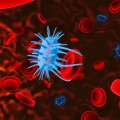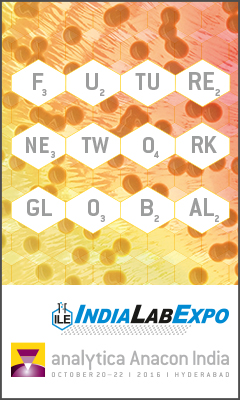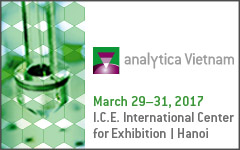|
L&Morient-orient-1-2014
A new application for microscopyNon-Invasive Cancer Diagnosis - von Dr Leo Habets
Cancer has been a part of human life from our earliest days. In research conducted by Aachen-based oncologist Dr Leo Habets, a non-invasive, microscope-based diagnostic procedure has the potential to revolutionise research and progress in understanding the circumstances of the disease, so as to develop new therapeutic approaches. Microscope-based high-content screening systems in basic clinical research: can a non-invasive procedure replace the...
 Characterization of Algal Organic Matter and their Biofuels Potential in Abu Dhabi, United Arab EmiratesAlgae as Biodiesel Source - von Prof. Dr Fares M. Howari
The need for alternative fuel sources is urgent as evinced by the worldwide declining of major hydrocarbon reservoirs, the high demand on hydrocarbon and associated environmental problems. Algae based biofuels or biodiesel are among the strongest options to serve as an alternative source of hydrocarbon. Biodiesel burns 50% cleaner than conventional petroleum-derived diesel [1] and can be used in any diesel engine with little to no...
 Clenbuterol testing in doping control samples: drug abuse or food contamination?Meat as a Doping Trap - von Prof. Dr Mario Thevis, Prof. Dr Wilhelm SchänzerExtending the genetic systemCode Identified - von Prof. Dr Thomas Carell
The genetic code encodes all of the information that each cell requires to function and interact correctly with its environment. The code is constructed from four separate molecules, known as the “canonical” Watson-Crick bases, namely: adenine, cytosine, guanine and thymine. The genetic code arises from the sequence of these four bases – given as A, C, G and T – in the DNA double helix.
 HOBOS’ Prominent Patronessvon Dr Nizar Haddad, Princess Basma bint Ali
The story of HOBOS started with a successful book entitled “The Buzz about Bees” written by Prof. Dr. Jürgen Tautz in 2008. This unique book about the superorganism (the honey bee colony) was translated into 15 languages within one year. One of these languages was Arabic. It was translated by Dr. Nizar Haddad, a scientist from the Hashemite Kingdom of Jordan. The Arabic translation of the book won a prestigious award in applied and basic sciences....
 Learning from honeybees: live observation in the beehiveLight in the Darkness - von Prof. Dr Jürgen Tautz, Bernhard Schneider, Kristina Vonend
Inside a beehive it is warm – and utterly dark. The hive members function like a highly complex organism. Some 50,000 individuals live cheek-by-jowl and yet still have room to move. Thanks to the ingenious division of labour, it’s more a case of "busy as a hive" than "busy as a bee". Usually, what occurs in a beehive remains hidden from human view. Not so with HOBOS (HOneyBee Online Studies), the online research platform launched by our team....
 Re-creating cardiac tissueA Heart in a Petri Dish - von Prof. Dr Marko D. Mihovilovic
For medical research in the 21st century, regenerative medicine offers one of the most promising futures and prospects for further development. Revolutionary results have already been achieved by the efforts of genetic engineering, although ethical and regulatory aspects mean that such methods are unlikely to see widespread deployment.
A complementary approach is now being pursued by the application of small-molecule compounds: a rapidly growing...  Safe operation of laboratoriesRequirements for the Technical Equipment - von David Miller
Safety and energy efficiency are today principal requirements for the technical equipment of labs. The safety of people in the workplace is of paramount importance and must be ensured at all times. This is particularly true for workplaces which are exposed to increased risks. This article describes the role of the ventilation and air conditioning technology in such an environment.
 |
L&M orient 1 / 2014
|


















